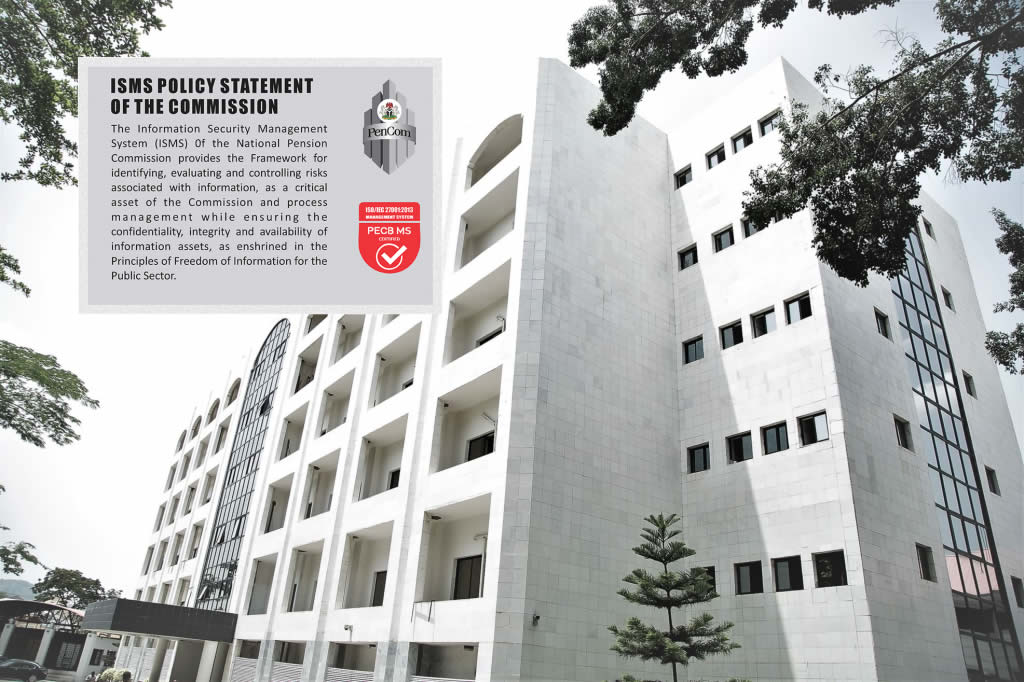Economy
The World’s Top 10 Economies

The inequitable distribution of income is present at the global level where the nominal gross domestic product (GDP) of the top 10 economies adds up to over 66% of the world’s economy, and the top 15 economies add up to over 75%. The remaining 172 countries constitute only 25% of the world’s economy.
Here’s the list of the top 10 economies based on the criteria of GDP, current prices (US dollars) which is simply known as nominal GDP. The rankings differ if the same list is prepared using the GDP based on purchasing-power-parity (PPP).
As a general rule, developed countries have a smaller gap between their nominal GDP (i.e., current prices) and GDP based on PPP.
The difference is greater in developing countries, which tend to have a higher GDP when valued on purchasing-power-parity basis. This list is based on IMF data, which is updated twice annually.
This list was compiled by Investopedia and last updated on July 18, 2016.
- United States
The U.S. economy is the largest in the world in terms of nominal GDP (measured at current prices in US dollars). The $17.95 trillion US economy is approximately 24.5% of the gross world product. The United States is an economic superpower that is highly advanced in terms of technology and infrastructure and has abundant natural resources. However, the U.S. economy loses its spot as the number one economy by a slight margin to China when measured in terms of GDP based on PPP. In these terms, China’s GDP is $19.4 trillion and the U.S. GDP is $17.95 trillion. However, the U.S. is way ahead of China in terms of GDP per capita (PPP) – approximately $55,805 in the U.S. versus $14,107 in China.
- China
China has transformed itself from a centrally planned closed economy in the 1970’s to a manufacturing and exporting hub over the years. The Chinese economy is propelled by an equal contribution from manufacturing and services (45% each, approximately) with a 10% contribution by the agricultural sector. The Chinese economy overtook the U.S. economy in terms of GDP based on PPP. However, the difference between the economies in terms of nominal GDP remains large. China is currently a $10.98 trillion economy and has been growing at around 7% in the recent years, although that growth is starting to slow down.
- Japan
Japan’s economy ranks third in terms of nominal GDP, while it slips to fourth spot when comparing the GDP by purchasing-power-parity. The economy has been facing hard times since 2008, when it was first showed recessionary symptoms. Though the government’s stimulus packages have helped the economy recover a bit, the massive earthquake in 2011 gave the fragile economy another jolt. Economic growth has hovered between 0.5–2% in recent times, but is forecasted to stay below 1% during the next six years. The nominal GDP of Japan is $4.12 trillion, its GDP (PPP) is $4.83 trillion, and its GDP (PPP) per capita is $38,054.
- Germany
Germany is Europe’s largest and strongest economy. On the world scale, it ranks as the fourth largest economy in terms of nominal GDP. Germany’s economy is known for its exports of machinery, vehicles, household equipment, and chemicals. Germany has a skilled labor force, but the economy faces demographic challenges like most European nations. The size of its nominal GDP is $3.36 trillion, while its GDP in terms of purchasing-power-parity is $3.84 trillion. Germany’s GDP (PPP) per capita is $46,893, and the economy has moved at a moderate pace of 1-2% in recent years and is forecasted to stay that way.
- United Kingdom
The United Kingdom, with a $2.85 trillion GDP, is the world’s fifth largest. The economy of the UK is primarily driven by services, as the sector contributes more than 75% of the GDP. With agriculture contributing a minimal 1%, manufacturing is the second most important contributor to GDP. Although agriculture is not a major contributor to GDP, 60% of its food needs is produced domestically, even though less than 2% of its labor force is employed in the sector. After the referendum in June 2016 when voters decided to leave the European Union, economic prospects for the UK are highly uncertain, and the UK and France may swap places. The country will operate under EU regulations and trade agreements for two years after the formal announcement of an exit to the European Council, in which time officials will work on a new trade agreement. Economists have estimated that a Brexit could result in a loss of anywhere from 2.2-9.5% of GDP, depending on the trade agreements replacing the current single market structure.
- France
France, the most visited country in the world, is the sixth largest economy with a nominal GDP of $2.42 trillion. Its GDP in terms of PPP is around $2.65 trillion. France has a low poverty rate and high standard of living, which is reflected in its GDP (PPP) per capita of $41,180. The country is among the top exporters and importers in the world. France has experienced a slowdown over the past few years and the government is under immense pressure to rekindle the economy, as well as combat high unemployment which reached 10.35% in 2015. According to IMF forecasts the country’s GDP growth rate is expected to rise over the next six years, and unemployment is expected to go down.
- India
India ranks third in GDP in terms of purchasing-power-parity ($7.97 trillion), while its nominal GDP ($2.09 trillion) puts it in a seventh place. The country’s high population drags its GDP (PPP) per capita down to $6,162. India’s GDP is still dependent on agriculture (17%), compared to western countries. However, the services sector has picked up in recent years and now accounts for 57% of the GDP, while industry contributes 26%. The economy’s strength lies in a limited dependence on exports, high saving rates, favourable demographics, and a rising middle class. India recently overtook China as the fastest growing large economy.
- Italy
Italy’s $1.16 trillion economy is the world’s eighth largest in terms of nominal GDP. Italy is among the prominent economies of the eurozone, but it has been impacted by the debt crisis in the region. The economy suffers from a huge public debt estimated to be about 135.8% of GDP, and its banking system is close to a collapse and in need of a bail-out/bail-in. The economy is also facing high unemployment, but saw a positive economic growth in 2015 for the first time since 2011. The government is working on various measures to boost the economy that has contracted in recent years. The GDP measured in purchasing-power-parity for the economy is estimated at $2.17 trillion, while its per capita GDP (PPP) is $35,708.
- Brazil
Brazil with its $1.77 trillion economy, it is the ninth largest economy by nominal GDP. The Brazilian economy has developed services, manufacturing, and agricultural sectors with each sector contributing around 68%, 26%, and 6% respectively. Brazil is one of the BRIC countries, and was projected to continue to be one of the fastest growing economies in the world. However, the recession in 2015 caused Brazil to go from seventh to ninth place in the world economies ranking, with a negative growth rate of 3.8%. The IMF does not expect positive growth until 2018, and the unemployment rate is expected to grow over 3% – to 10.4% – over the same time period. The Brazilian GDP measured in purchasing-power-parity is $3.19 trillion, while its GDP per capita (PPP) is $15,614.
- Canada
Canada pushed Russia off the list with a nominal GDP of $1.55 trillion. Canada has a highly service oriented economy, and has had solid growth in manufacturing as well as in the oil and petroleum sector since the Second World War. However, the country is very exposed to commodity prices, and the drop in oil prices kept the economy from growing more than 1.2% in 2015 (down from 2.5% the previous year). The GDP measured in purchasing-power parity is $1.6 trillion, and the GDP per capita (PPP) is $45,553.
The Bottom Line
Some other economies that are a part of the “trillion-dollar” club and have the potential to make it to the top 10 going ahead are South Korea ($1.38 trillion), Russia ($1.32 trillion), Australia ($1.22 trillion), Spain ($1.2 trillion), and Mexico ($1.14 trillion).
Source: Investopedia
Economy
Seplat to Boost Nigeria’s Oil Production With Mobil Assets Acquisition

By Adedapo Adesanya
Seplat Energy Plc will revive hundreds of Nigerian oil wells laying fallow after completing the acquisition of Mobil Producing Nigeria Unlimited (MPNU) from ExxonMobil.
The company said it aims to lift oil output to about 200,000 barrels a day, a move that will help boost Nigeria’s oil production levels, as it aims to reach 2 million barrels per day next year.
The transaction, according to Seplat, “is transformative for Seplat Energy, more than doubling production and positioning the company to drive growth and profitability, whilst contributing significantly to Nigeria’s future prosperity.”
The completion of the Seplat-ExxonMobil deal has created Nigeria’s leading independent energy company, with the enlarged company having equity in 11 blocks (onshore and shallow water Nigeria); 48 producing oil and gas fields; 5 gas processing facilities; and 3 export terminals.
Recall that the Nigerian Upstream Petroleum Regulatory Commission (NUPRC) in October approved the deal as part of a series of approvals, while it blocked Shell’s asset sale of up to $2.4 billion to the Renaissance consortium.
The acquisition of the entire issued share capital of MPNU adds the following assets to the Seplat Group: 40 per cent operated interest in OML 67, 68, 70 and 104; 40 per cent operated interest in the Qua Iboe export terminal and the Yoho FSO; 51 per cent operated interest in the Bonny River Terminal (‘BRT’) NGL recovery plant; 9.6 per cent participating interest in the Aneman-Kpono field; and approximately 1,000 staff and 500 contractors will transition to the Seplat Group.
MPNU adds substantial reserves and production to Seplat Energy; 409 million barrels of oil equivalent (MMboe) 2P reserves and 670 MMboe 2P + 2C reserves and resources as at 30 June 2024 and 6M 2024 average daily production of 71.4 kboepd (thousand barrels of oil equivalent).
Business Post reports that Seplat will be part of the payment this year, and will defer some to next year,
Speaking on the transaction, the Chairman of Seplat Energy, Mr Udoma Udo Udoma commended President Bola Tinubu for supporting this transaction and appreciated the support and diligence of the various ministries and regulators for all the work to reach a successful conclusion.
“We are delighted to welcome the MPNU employees to Seplat Energy. We are excited to begin our journey in a new region of the country, and we look forward to replicating the positive impacts we have achieved within our communities in our current areas of operations.
“Seplat’s mission is to deliver value to all our stakeholders, and we treasure the good relationships we have developed with the government, regulators, communities and our staff.”
On his part, the chief executive of Seplat Energy, Mr Roger Brown, described the acquisition as a major milestone, adding, “I extend my thanks to the entire Seplat team for their hard work and perseverance to complete this transaction.
“MPNU’s employees and contractors have a strong reputation for safety and operational excellence, and I welcome them to the Seplat Energy Group.
“We have acquired a company with one of the best portfolios of assets and related infrastructure in a world-class basin, providing enormous potential for the Seplat Group. Our commitment is to invest to increase oil and gas production while reducing costs and emissions, maximising value for all our stakeholders.
“MPNU is a perfect fit with our strategy to build a sustainable business that can deliver affordable, accessible and reliable energy for Nigeria alongside attractive returns to our shareholders”.
Economy
PenCom Projects N22trn Pension Assets for 2024

By Adedapo Adesanya
The National Pension Commission (PenCom) is projected to close the year with over N22 trillion in pension assets impacted by challenges like inflation and monetary policies.
This is according to PenCom Director-General, Mrs Omolola Oloworaran, at a press conference in Abuja on Thursday.
She said as of October 2024, the Contributory Pension Scheme (CPS) had 10.53 million registered contributors and pension fund assets worth N21.92 trillion.
Speaking at the conference-themed Tech-driven Transformation Shaping the Pension Landscape, which showcased PenCom’s strategic commitment to innovation, she said that the numbers reflected the agency’s unwavering commitment to fund safety, prudent management, and sustainable growth.
She explained that the pension environment was impacted by the wider economic challenges facing the country, noting that the sector battled multi-year high inflation, Naira devaluation, and the lingering effects of unorthodox monetary policies by the Central Bank of Nigeria (CBN).
Business Post reports that the apex bank hiked interest rates by 875 basis points this year alone to tackle persistent inflation which peaked at 33.8 per cent as of October.
She said that these challenges eroded the real value of pension funds and impacted contributors’ purchasing power.
“To address these issues, the commission has initiated a comprehensive review of its investment regulations.
“It is focusing on diversifying pension fund investments into inflation-protected instruments, alternative assets, and foreign currency-denominated investments.
“The goal is to safeguard contributor savings and ensure resilience against future economic volatility,” she said.
She restated the commission’s commitment to expanding pension coverage, particularly through the advanced micro-pension plan designed to encourage participation from the informal sector using technology.
“This initiative will make it easier for everyday Nigerians to save for retirement, aligning with our vision of inclusive growth and financial stability for all.
“The backlog in retirement benefits for retirees of the Federal Government’s Ministries, Departments, and Agencies (MDAs) will soon be settled.
“The federal government recently disbursed N44 billion under the 2024 budget to settle approved pension rights.
“We are collaborating with the Federal Government to institutionalise a sustainable solution to ensure retirees receive their benefits promptly, eliminating delays,” Mrs Oloworaran said.
She said that PenCom’s technology-driven transformation aimed to make the CPS more accessible, reliable, and sustainable.
“From data management to seamless contributions and regulatory supervision, we are paving the way for a future where the pension industry serves all Nigerians effectively,” she said,
Mrs Oloworaran also said that the e-application portal for pension clearance certificates has replaced the manual processes and enhanced the ease of doing business in the sector.
“Since its deployment, 38,528 pension clearance certificates have been issued. This initiative ensures compliance and secures the future of Nigerians working in organisations that interact with the government,” she said.
Economy
NASD OTC Securities Exchange Closes Flat

By Adedapo Adesanya
The NASD Over-the-Counter (OTC) Securities Exchange closed flat on Thursday, December 12 after it ended the trading session with no single price gainer or loser.
As a result, the market capitalisation remained unchanged at N1.055 trillion as the NASD Unlisted Security Index (NSI) followed the same route, remaining at 3,012.50 points like the previous trading session.
However, the activity chart witnessed changes as the volume of securities traded at the bourse went down by 92.5 per cent to 447,905 units from the 5.9 million units transacted a day earlier.
In the same vein, the value of securities bought and sold by investors declined by 86.6 per cent to N3.02 million from the N22.5 million recorded in the preceding trading day.
But the number of deals carried out during the session remained unchanged at 21 deals, according to data obtained by Business Post.
When trading activities ended for the day, Geo-Fluids Plc remained the most active stock by volume (year-to-date) with 1.7 billion units sold for N3.9 billion, Okitipupa Plc came next with 752.2 million units valued at N7.8 billion, and Afriland Properties Plc was in third place with 297.5 million units worth N5.3 million.
Also, Aradel Holdings Plc remained the most active stock by value (year-to-date) with 108.7 million units worth N89.2 billion, followed by Okitipupa Plc with 752.2 million units valued at N7.8 billion, and Afriland Properties Plc with 297.5 million units sold for N5.3 billion.
-

 Feature/OPED5 years ago
Feature/OPED5 years agoDavos was Different this year
-
Travel/Tourism8 years ago
Lagos Seals Western Lodge Hotel In Ikorodu
-

 Showbiz2 years ago
Showbiz2 years agoEstranged Lover Releases Videos of Empress Njamah Bathing
-

 Banking6 years ago
Banking6 years agoSort Codes of GTBank Branches in Nigeria
-

 Economy2 years ago
Economy2 years agoSubsidy Removal: CNG at N130 Per Litre Cheaper Than Petrol—IPMAN
-

 Banking2 years ago
Banking2 years agoFirst Bank Announces Planned Downtime
-

 Sports2 years ago
Sports2 years agoHighest Paid Nigerian Footballer – How Much Do Nigerian Footballers Earn
-

 Technology4 years ago
Technology4 years agoHow To Link Your MTN, Airtel, Glo, 9mobile Lines to NIN
























